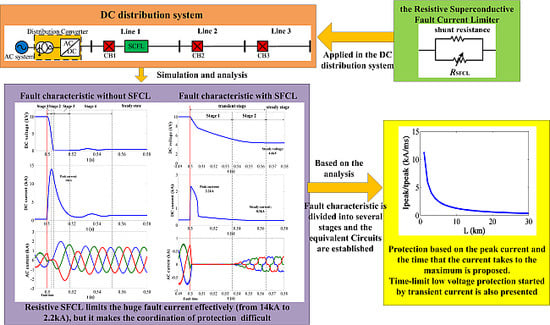Protection Principle for a DC Distribution System with a Resistive Superconductive Fault Current Limiter
Abstract
:1. Introduction
2. Resistive Superconducting Fault Current Limiter
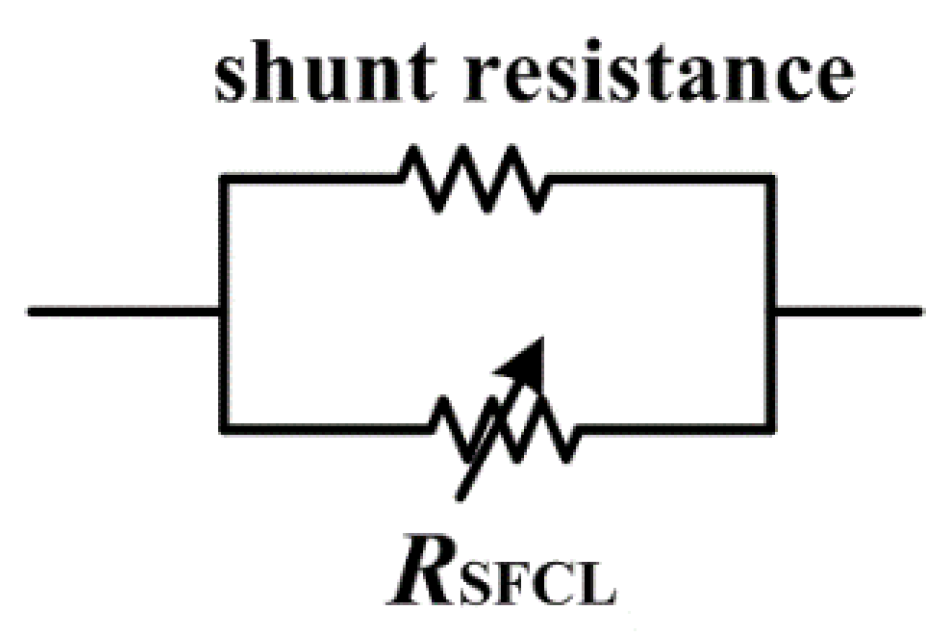
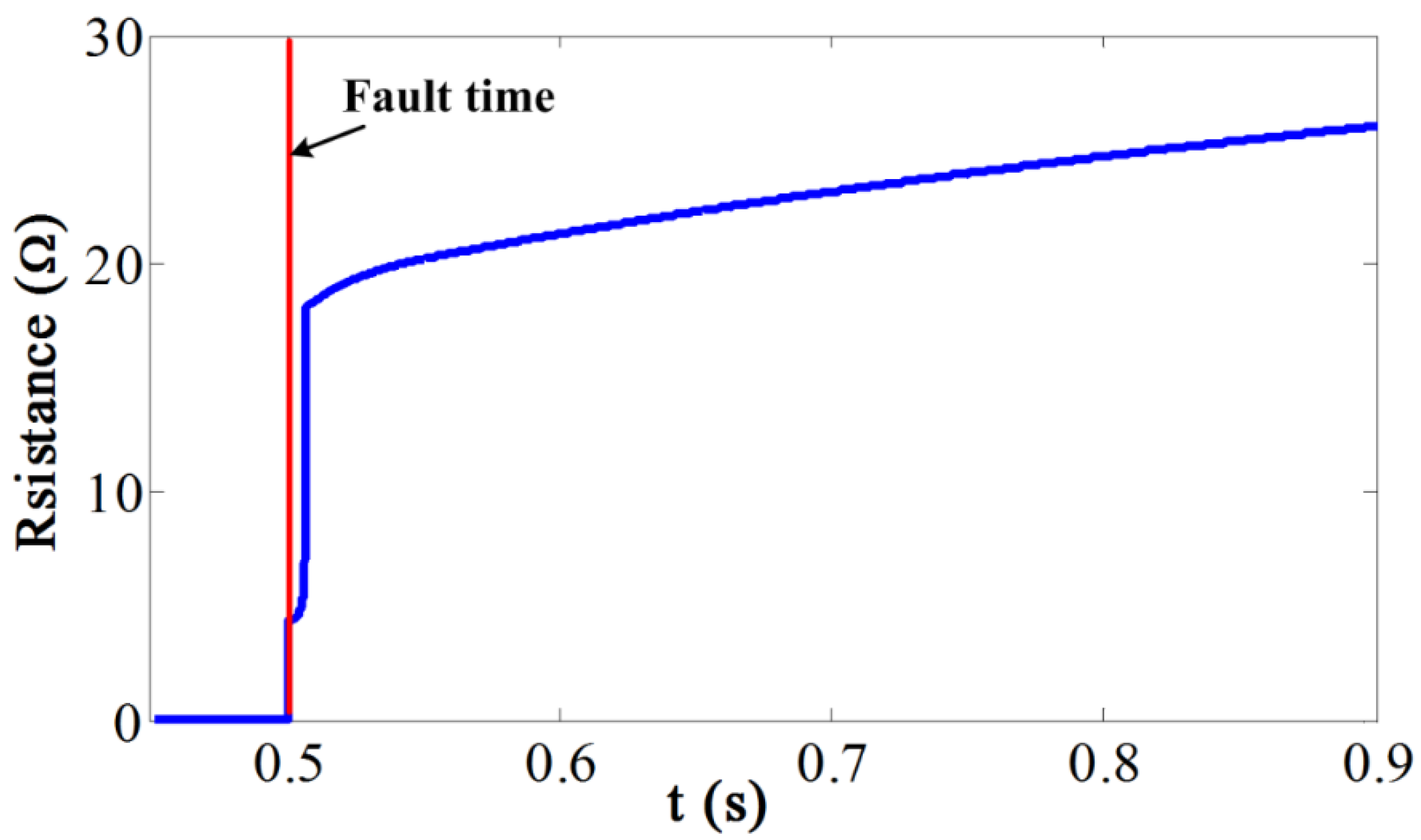
3. Analysis of Fault Characteristic in the DC Distribution System with the SFCL

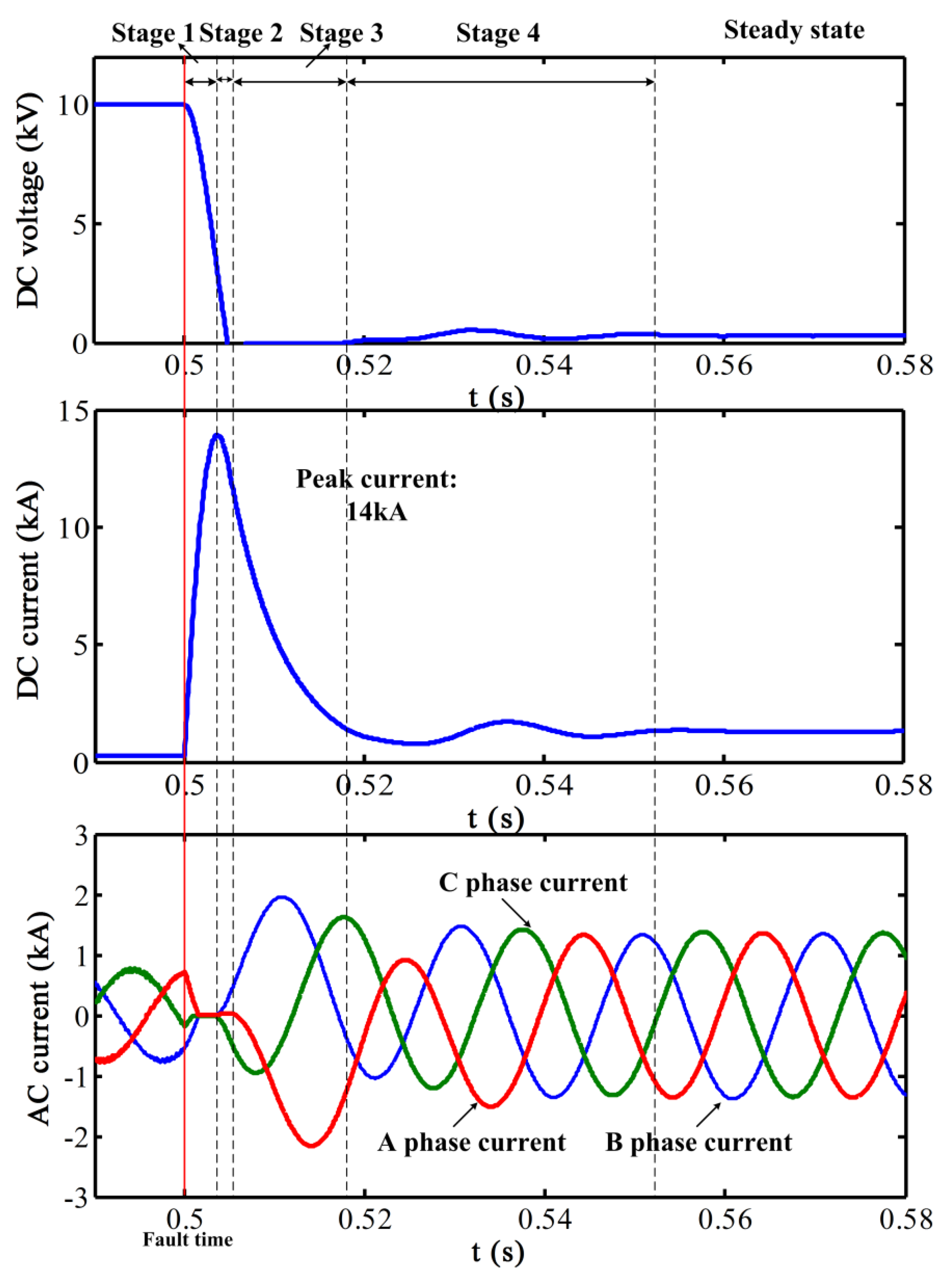
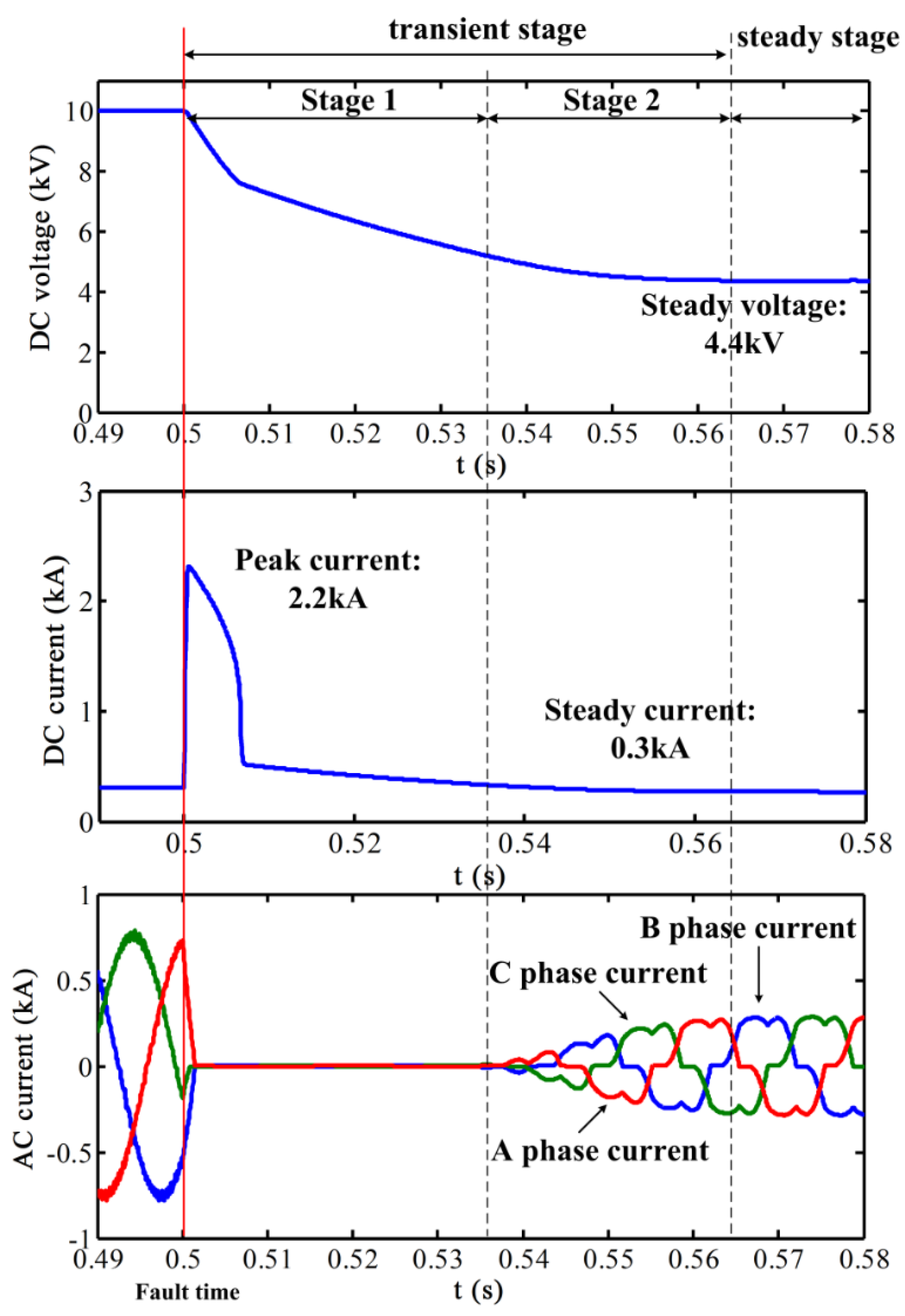
3.1. The Transient State of the DC Short-Circuit Fault with the Resistive SFCL


3.2. The Steady State of the DC Short-Circuit Fault with the Resistive SFCL
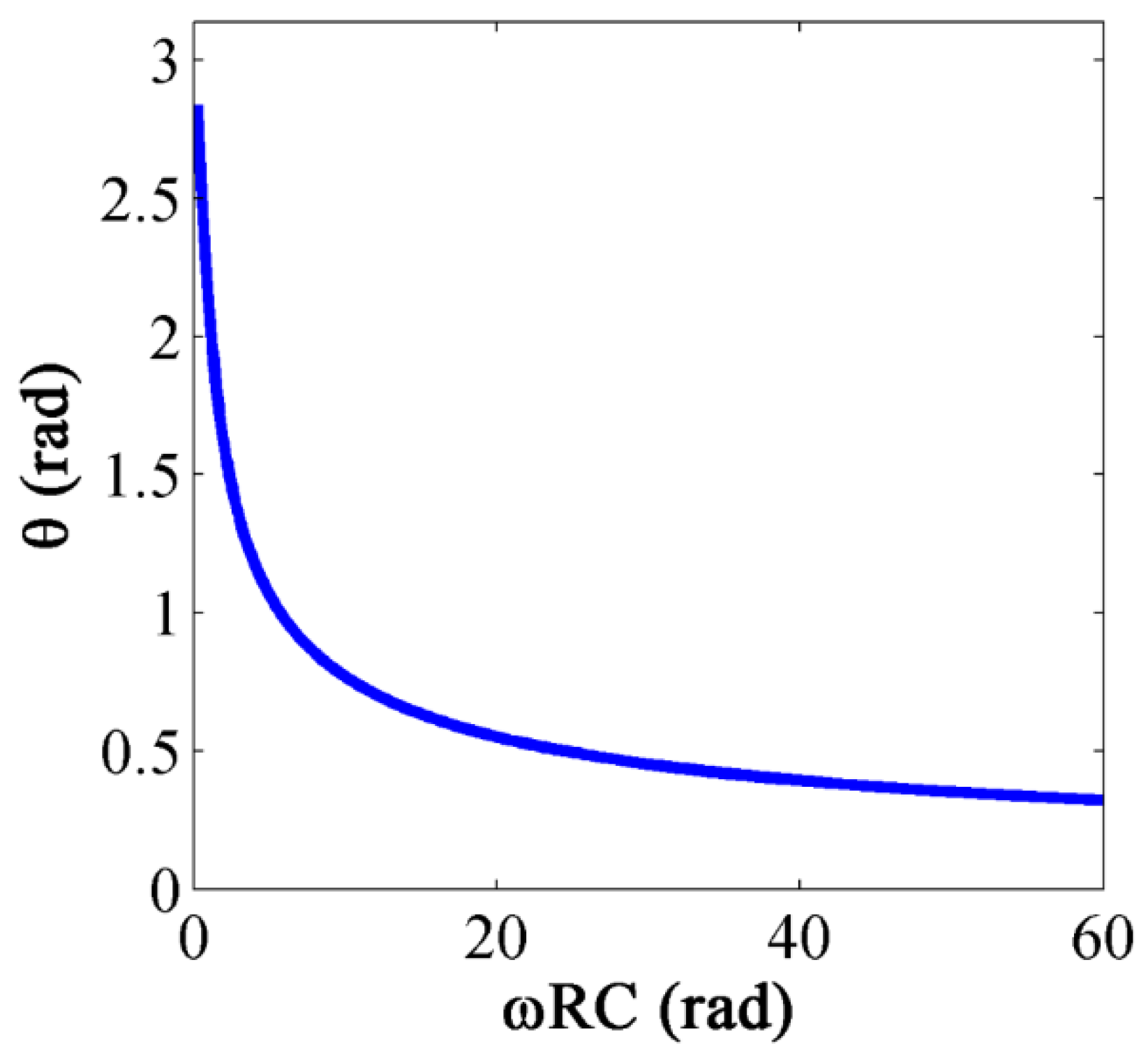
4. Protection Principle and Verification
4.1. Transient Current Protection and Its Coordination
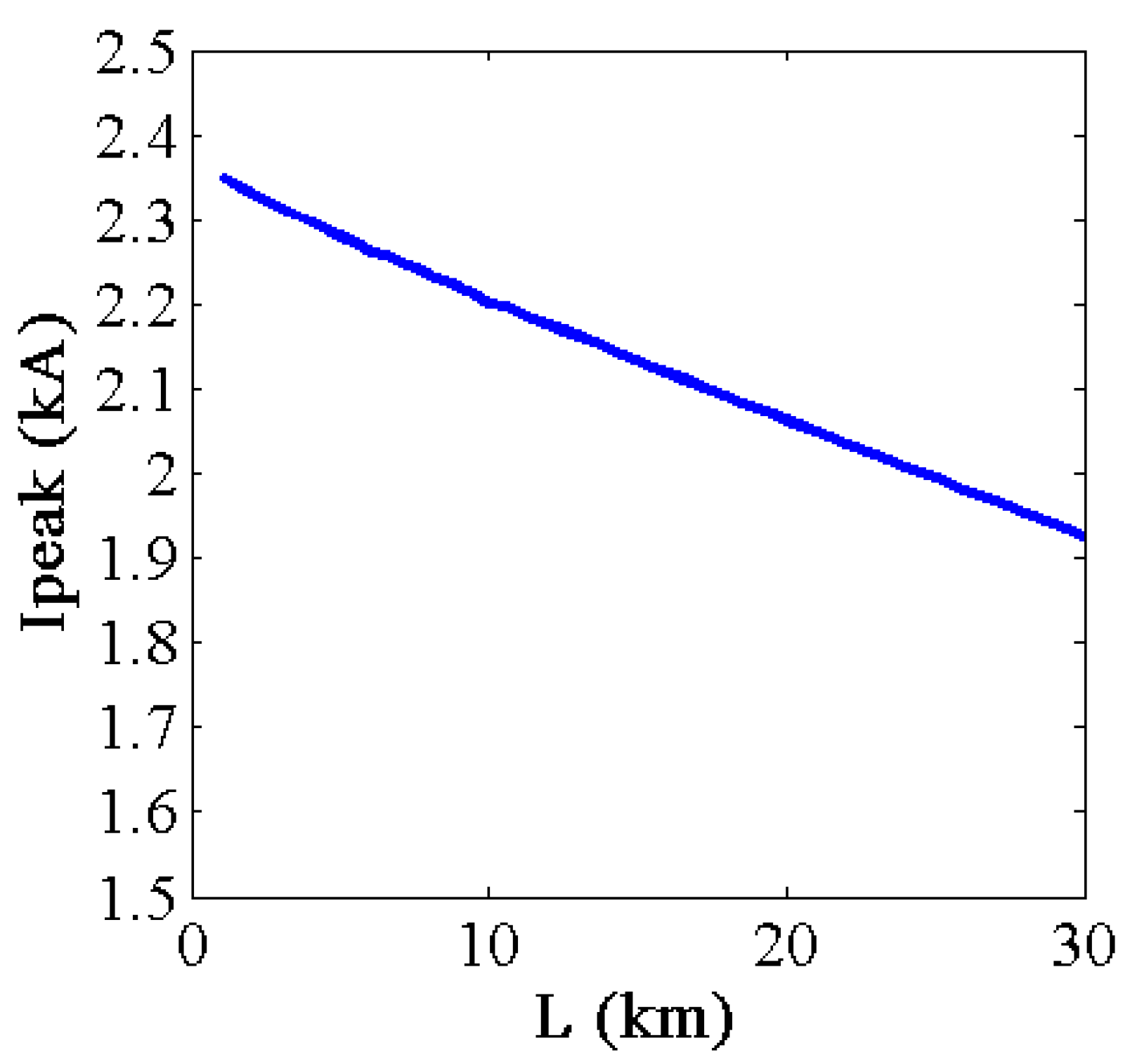
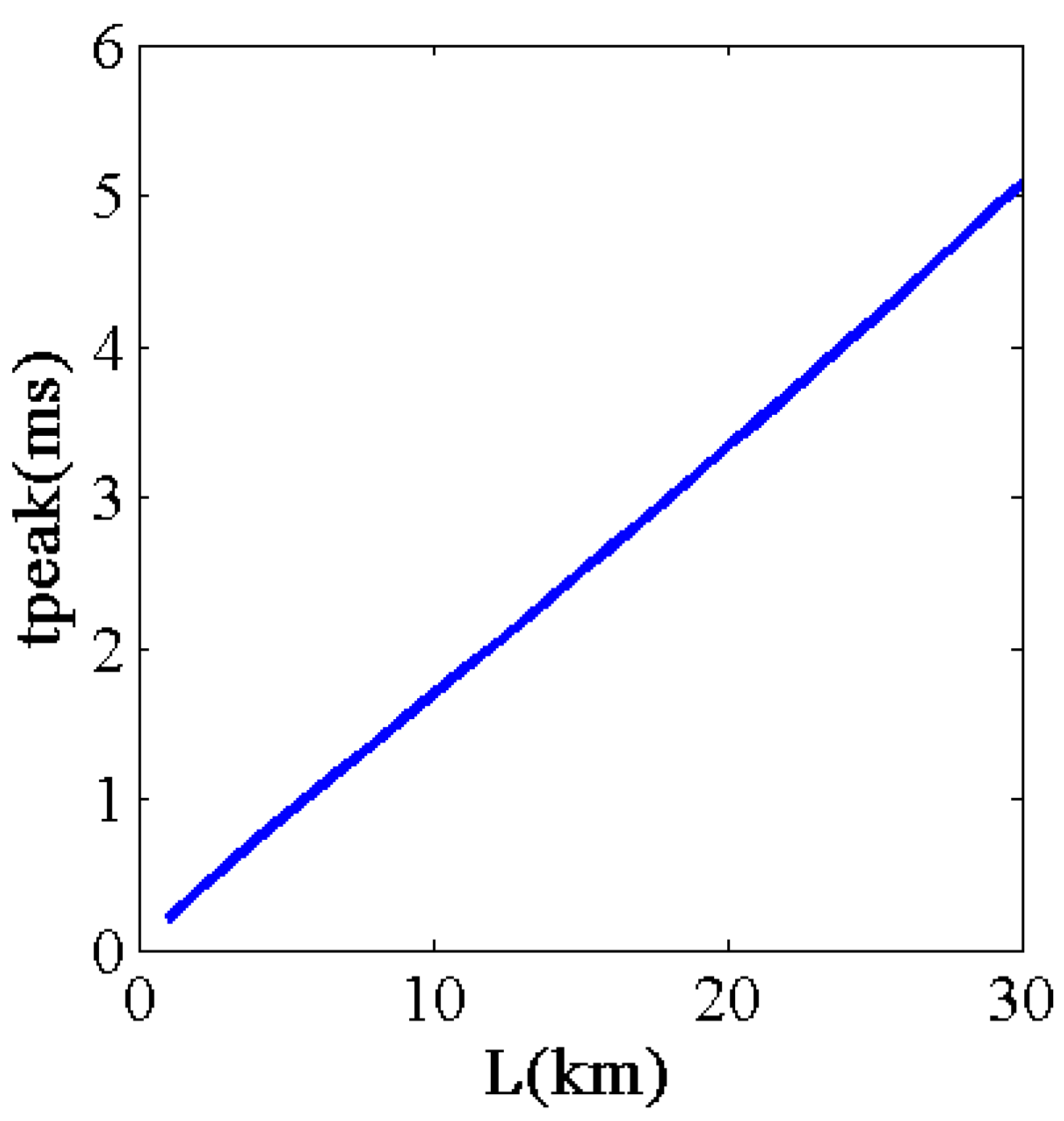
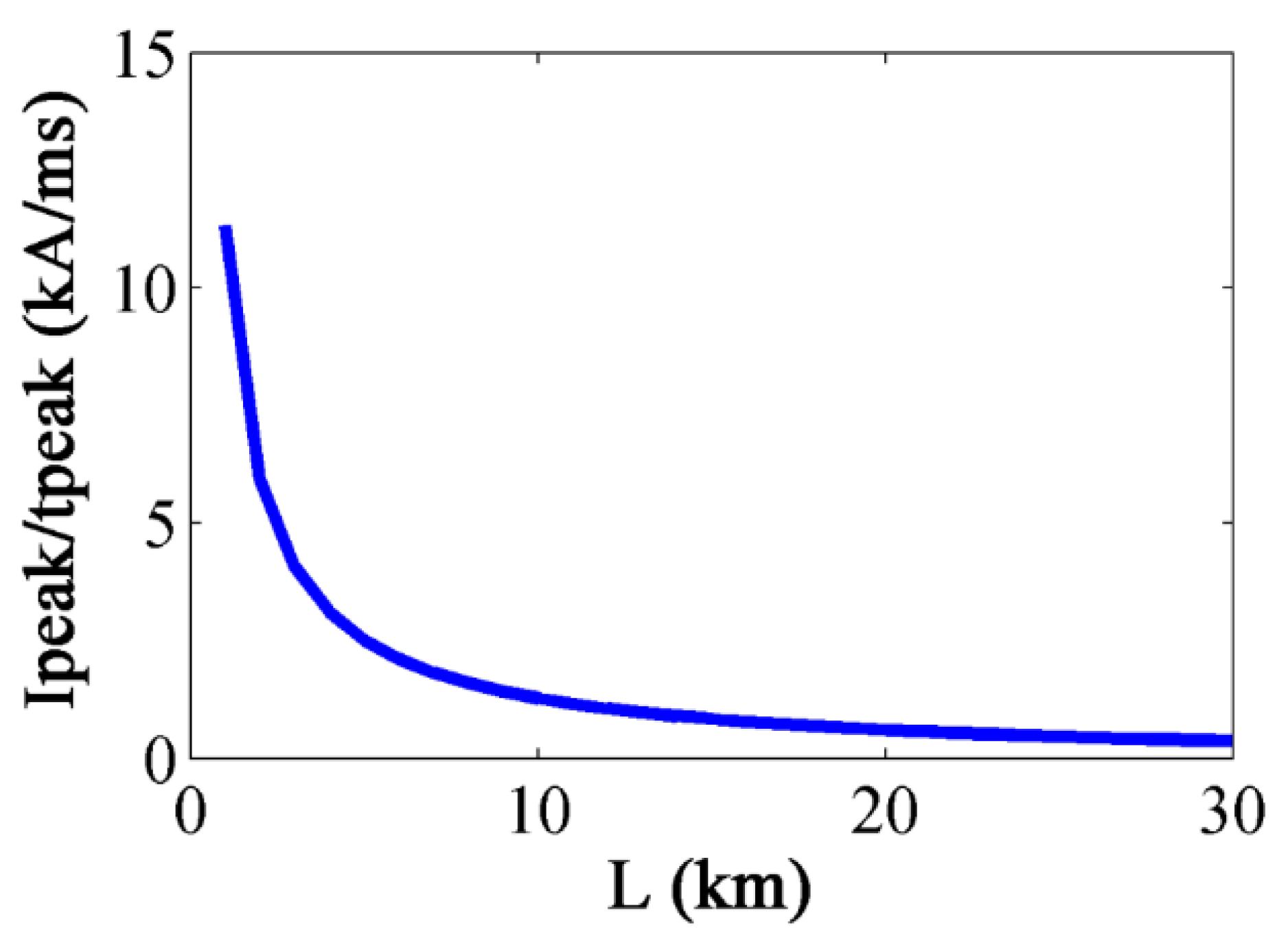
4.1.1. Transient Current Protection
4.1.2. Time-Limit under Voltage Protection Started by the Transient Current
4.2. Case Study

| Line | Parameters | Thresholds | |
|---|---|---|---|
| Line1 (CB1) | I | transient current threshold | 1.424 (kA/ms) |
| II | transient current threshold | 0.812 (kA/ms) | |
| under voltage threshold | 5.0 (kV) | ||
| time delay threshold | 0.2 (s) | ||
| Line2 (CB2) | I | transient current threshold | 0.738 (kA/ms) |
| II | transient current threshold | 0.496 (kA/ms) | |
| under voltage threshold | 5.0 (kV) | ||
| time delay threshold | 0.2 (s) | ||
| Line3 (CB3) | I | instantaneous overcurrent threshold | 1.5 (kA) |
| II | time-limit overcurrent threshold | 1.5 (kA) | |
| time delay threshold | 0.2 (s) |
| Line | Fault Location (Percentage of the Line) | The Action of Breakers (Time for Receiving Trip Instruction) (s) | ||
|---|---|---|---|---|
| CB1 | CB2 | CB3 | ||
| Line1 | 30% | 0.5010 | # | # |
| 80% | 0.5017 | # | # | |
| 100% | 0.7021 | # | # | |
| Line2 | 30% | # | 0.5027 | # |
| 80% | # | 0.5034 | # | |
| 100% | # | 0.7038 | # | |
| Line3 | 30% | # | # | 0.5026 |
| 80% | # | # | 0.5033 | |
| 100% | # | # | 0.5039 | |
5. Conclusions
Acknowledgments
Author Contributions
Conflicts of Interest
References
- Starke, M.R.; Tolbert, L.M.; Ozpineci, B. AC vs. DC distribution: A loss comparison. In Proceedings of the IEEE/PES TDCE, Chicago, IL, USA, 21–24 April 2008; pp. 225–231.
- Kakigano, H.; Nomura, M.; Ise, T. Loss evaluation of DC distribution for residential houses compared with AC system. In Proceedings of the IPEC, Sapporo, Japan, 21–24 June 2010; pp. 480–486.
- Mahmoodi, M.; Gharehpetian, G.B.; Abedi, M. A suitable control strategy for source converters and a novel load-generation voltage control scheme for DC voltage determination in DC distribution systems. In Proceedings of the IPEC, Putra Jaya, Malaysia, 28–29 November 2006; pp. 363–367.
- Starke, M.R.; Li, F.; Tolbert, L.M.; Ozpineci, B. AC vs. DC distribution: maximum transfer capability. In Proceedings of the IEEE PES, Pittsburgh, PA, USA, 20–24 July 2008; pp. 922–927.
- Sannino, A.; Postiglione, G.; Bollen, M.H.J. Feasibility of a DC network for commercial facilities. IEEE Trans. Ind. Appl. 2003, 39, 1499–1507. [Google Scholar] [CrossRef]
- Yang, J.; Fletcher, J.E.; O’ Reilly, J. Short-circuit and ground fault analyses and location in VSC-based DC network cables. IEEE Trans. Ind. Electron. 2012, 59, 3827–3837. [Google Scholar] [CrossRef]
- Khan, U.A.; Hwang, J.-S.; Seong, J.-K.; Lee, B.-W. Application and positioning analysis of a resistive type Superconducting Fault Current Limiter in AC and DC microgrids using Simulink and SimPowerSystem. In Proceedings of the ICEPE-ST, Xi’an, China, 23–27 October 2011; pp. 348–351.
- Manohar, P.; Ahmed, W. Superconducting Fault Current Limiter to mitigate the effect of DC Line fault in VSC-HVDC system. In Proceedings of the EPSCICON, Thrissur, Kerala, India, 3–6 January 2012; pp. 1–6.
- Lee, J.-G.; Khan, U.-A.; Hwang, J.-S.; Seong, J.-K.; Shin, W.-J.; Park, B.-B.; Lee, B.-W. Assessment on the influence of resistive superconducting fault current limiter in VSC-HVDC system. Phys. C. 2014, 504, 163–166. [Google Scholar] [CrossRef]
- Hwang, J.-S.; Khan, U.A.; Shin, W.-J. Validity analysis on the positioning of superconducting fault current limiter in neighboring AC and DC microgrid. IEEE Trans. Appl. Supercond. 2013, 23. [Google Scholar] [CrossRef]
- Ciezki, J.G.; Ashton, R.W. Selection and stability issues associated with a navy shipboard DC zonal electric distribution system. IEEE Trans. Power Deliver. 2000, 25, 665–669. [Google Scholar] [CrossRef]
- Tang, L. Control and Protection of Multi-Terminal DC Transmission Systems Based on Voltage-Source Converters. Ph.D. Thesis, McGill University, Montreal, QC, Canada, 2003. [Google Scholar]
- Mesute, B.; Nikhil, R.M. Overcurrent protection on voltage-source-converter based multi-terminal DC distribution systems. IEEE Trans. Power Deliver. 2007, 22, 406–411. [Google Scholar] [CrossRef]
- Tang, L.; Ooi, B.-T. Locating and isolating DC faults in multi-terminal DC systems. IEEE Trans. Power Deliver. 2007, 22, 1877–1884. [Google Scholar] [CrossRef]
- Salonen, P.; Nuutinen, P.; Peltoniemi, P. LVDC distribution system protection: Solutions, implementation and measurements. In Proceedings of the EPE, Barcelona, Spain, 8–10 September 2009; pp. 1–10.
- Xue, S.M.; Chen, C.C.; Jin, Y.; Li, Y.L.; Li, B.T.; Wang, Y. Protection for DC distribution system with distributed generator. J. Appl. Math. 2014, 2014. [Google Scholar] [CrossRef]
- Duan, P.; Xie, K.-G.; Zhang, L.; Rong, X. Open-switch fault diagnosis and system reconfiguration of doubly fed wind power converter used in a microgrid. IEEE Trans. Power Electron. 2011, 26, 816–821. [Google Scholar] [CrossRef]
- Choi, U.-M.; Jeong, H.-G.; Lee, K.-B.; Blaabjerg, F. Method for detecting an open-switch fault in a grid-connected NPC inverter system. IEEE Trans. Power Electron. 2012, 27, 2726–2739. [Google Scholar] [CrossRef]
- De Sousa, W.T.B.; Polasek, A.; Silva, F.A.; Dias, R.; Rio de Janeiro, B. Simulation and tests of MCP-BSCCO-2212 superconducting fault current limiters. IEEE Trans. Appl. Supercond. 2012, 22. [Google Scholar] [CrossRef]
- Langston, J.; Steurer, M.; Woodruff, S.; Baldwin, T.; Tang, J. A generic real time computer simulation model for superconducting fault current limiters and its applications in system protection studies. IEEE Trans. Appl. Supercond. 2005, 15, 2090–2093. [Google Scholar] [CrossRef]
© 2015 by the authors; licensee MDPI, Basel, Switzerland. This article is an open access article distributed under the terms and conditions of the Creative Commons Attribution license (http://creativecommons.org/licenses/by/4.0/).
Share and Cite
Xue, S.; Gao, F.; Sun, W.; Li, B. Protection Principle for a DC Distribution System with a Resistive Superconductive Fault Current Limiter. Energies 2015, 8, 4839-4852. https://doi.org/10.3390/en8064839
Xue S, Gao F, Sun W, Li B. Protection Principle for a DC Distribution System with a Resistive Superconductive Fault Current Limiter. Energies. 2015; 8(6):4839-4852. https://doi.org/10.3390/en8064839
Chicago/Turabian StyleXue, Shimin, Feng Gao, Wenpeng Sun, and Botong Li. 2015. "Protection Principle for a DC Distribution System with a Resistive Superconductive Fault Current Limiter" Energies 8, no. 6: 4839-4852. https://doi.org/10.3390/en8064839





